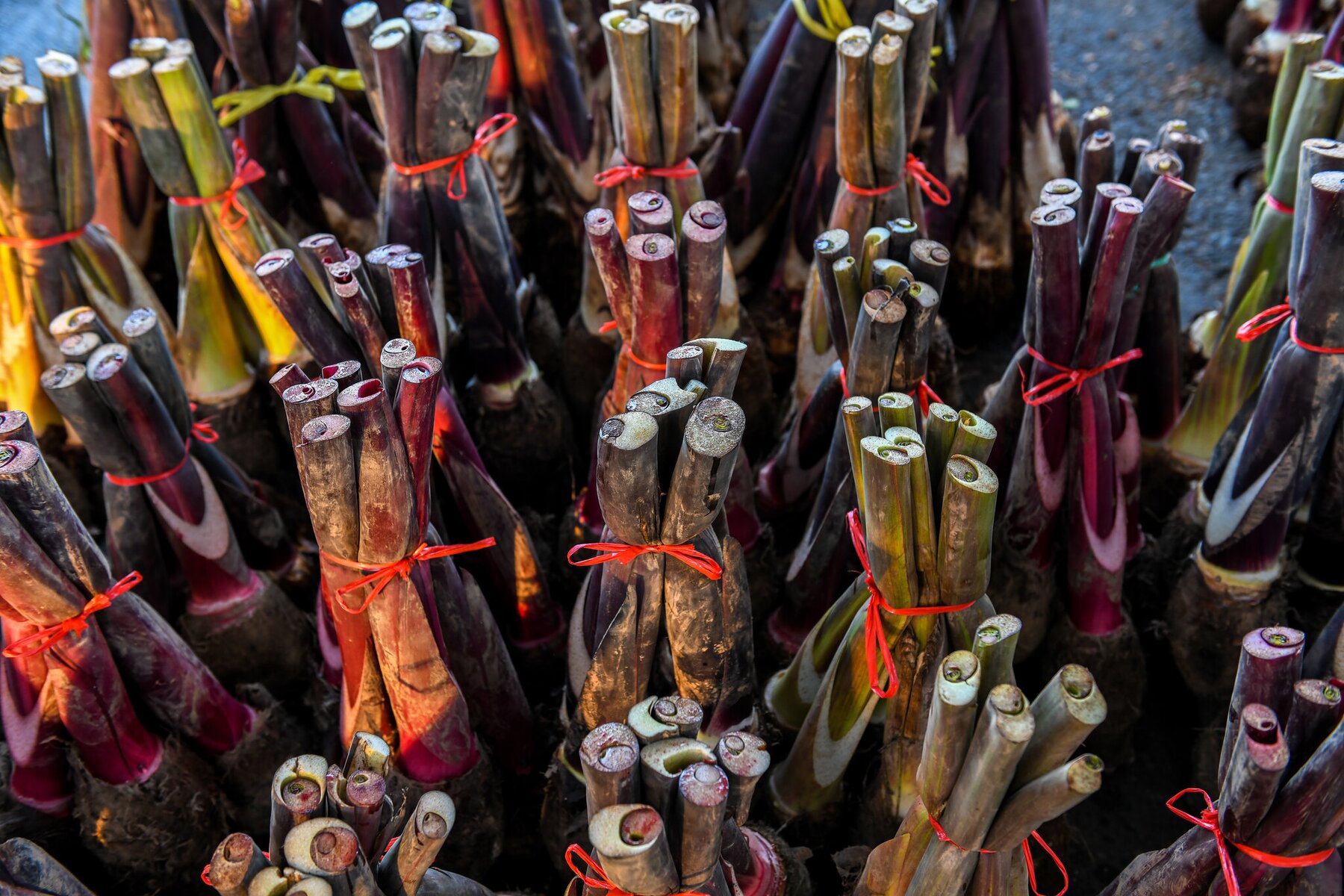Adapting Smallholder Farmers’ Crops to Climate Change Through Crop Diversity in the Pacific
The Crop Trust was established two decades ago to raise and manage an Endowment Fund to safeguard the world’s crop diversity. Today, the International Plant Treaty recognizes the Crop Trust's Endowment Fund as an essential element of its funding strategy. The Endowment Fund supports essential operations of key genebanks around the world, information management, and other services that connect genebanks in an effective and efficient global system.
In 2022, New Zealand invested NZ$ 8 million into Crop Trust's Endowment Fund to support the regional genebank of the Pacific Community in Fiji, the Centre for Pacific Crops and Trees (CePaCT). Through New Zealand’s investment, Crop Trust support for CePaCT has helped improve the delivery of community-level benefits that enable people in Pacific Island states and territories adapt their crops to climate change.

-
CePaCT conserves almost 1,300 accessions of edible aroids, mainly taro, and 330 accessions of yam, among other crops. CePaCT’s taro collection is currently the world’s largest and most diverse.
-
The size of CePaCT’s taro collection safely available to share doubled between 2020 and 2023, with one-third now fully available for use and rising.
- Genebank staff maintain this material in tissue cultures that can be cleaned of pests and diseases and made available safely to farmers, breeders, and researchers to improve the food and nutritional security of people in the Pacific and beyond.
- In the Cook Islands, CePaCT distributed crop varieties to farmers in the Outer Islands to improve soils and production. In Kiribati, introducing root crops and trees diversified the vulnerable country’s food crops and enhanced food security. On the Marshall Islands, tissue-cultured plants and seeds were made available to farmers and families to grow root crops, tree crops, and vegetables.
- After great losses due to taro leaf blight in the 2010s, 50 taro accessions from CePaCT were distributed to 15 countries outside the Pacific. This helped stave off potential disaster in West Africa, Latin America, the Caribbean, and Asia.
The Crop Trust takes a holistic approach to helping genebanks develop operational capacity and connect with global networks. The Crop Trust supported a thorough external review of the CePaCT genebank, and several activities were implemented to strengthen operations, information and quality management systems, and performance monitoring and evaluation.
- CePaCT established a quarantine holding area where plants undergo careful screening before introduction into the genebank and a separate ‘disaster bunker’ to save subsets of genebank holdings in the case of a natural disaster.
- Hands-on courses on receiving, evaluating and cleaning germplasm built the capacity of genebank staff.
- CePaCT now contributes data on almost 2,550 accessions of taro, yam, and other crops to the largest genebank database in the world, Genesys, which is developed and funded by the Crop Trust.
- CePaCT is also testing GRIN-Global Community Edition (GGCE), an open-source genebank information management software that is customizable and allows genebanks to run smoothly. In 2023, the Crop Trust's GGCE team trained CePaCT staff to help them adopt the GGCE and manage their genebank collections better. At the same time, CePaCT is lending its expertise to adapt GGCE to help other adopters around the world handle tissue culture collections.

Through collaboration with experts at the International Institute of Tropical Agriculture (IITA) and the International Potato Center (CIP), CePaCT is also laying the foundation for the cryopreservation of taro and yam plantlets.
- Pacific island crop diversity – such as taro, yam, breadfruit, banana, and cassava – is especially hard to safeguard because most of the crops do not produce seed. Preserving them requires saving a part of the plant itself. In some parts of the region, national agriculture programs have set up field collections to conserve indigenous varieties. However, the collections are threatened by plant disease, harsh weather, and land management issues.
- In the long term, cryopreservation is more cost-effective than conserving such crops in tissue culture. It allows for space-efficient and disease-free storage while facilitating global exchange and safety duplication.
- While supporting field genebanks and in vitro conservation, the Crop Trust is helping CePaCT open doors to partnerships around the world, especially with cryo-experts at IITA and the CIP. This can open more opportunities for cryopreservation of taro and yam plantlets.


The Crop Diversity Endowment Fund
At the heart of the Crop Trust's work is the Endowment Fund, a financing mechanism designed to provide the long-term stable funding needed to support key genebanks around the world. Only this kind of predictable, long-term support can underpin a global system of conservation and collaboration.
Related News
A Haven of Diversity
For International Day of the Tropics, we're taking a look at a genebank for pacific crops and trees. When we talk about the Svalbard Global Seed Vault being the tip of the iceberg of a global system of crop conservation, the...
28 Jun 2020
28 Jun 2020
CePaCT Donor Roundtable: Discussing support for the Pacific’s most important genebank
Donors, Pacific Community (SPC) scientists and the Crop Trust will meet in Suva, Fiji, at the end of March to discuss ways to raise money for the genebank of SPC’s Centre for Pacific Crops and Trees (CePaCT).
CePaCT conserves a...
14 Mar 2019
14 Mar 2019
Climate Funding to Support Pacific Seed Crops
The New Zealand government is putting NZD 10 million of its NZD 1.3 billion climate aid fund towards conserving Pacific crop seeds and researching climate-resilient varieties.
Prime Minister Jacinda Ardern and Foreign Affairs...
12 Jul 2022




